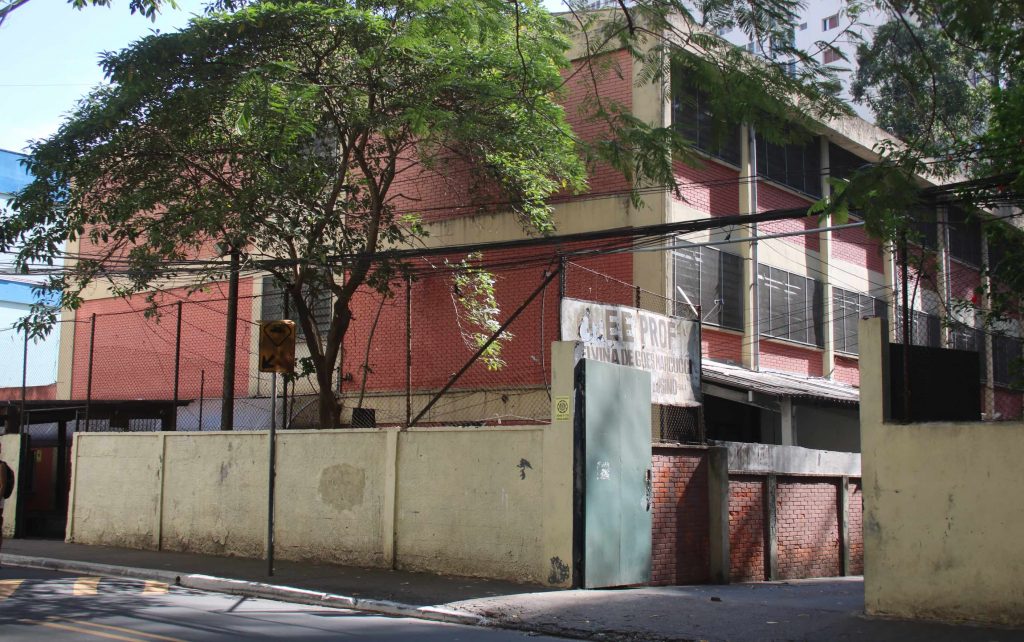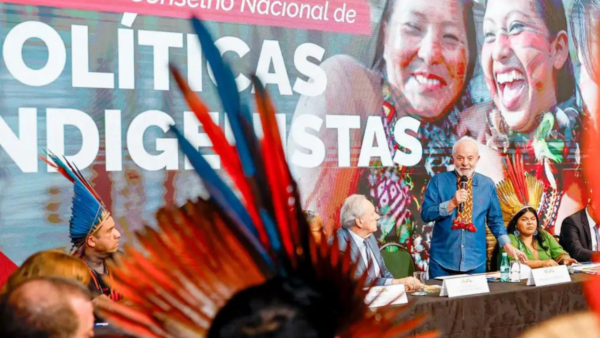Tucked behind São Paulo FC’s stadium in the upper-class neighborhood of Morumbi, Porto Seguro is a lavish private school with intense security. It boasts its own football ground, an adjoining terrace and athletics track, chic snack bars and even a zoo containing a rare peacock donated by a Swedish princess who once studied there. In classrooms laden with the latest state-of-the-art technology, its predominantly white alumni follow both the German and Brazilian education curriculum and, in their English classes, the senior sets have just concluded a famous 1932 novel by Aldous Huxley while dreaming of Ivy League colleges and the finest European universities. On one wall, a huge display contains the photos and current destinations of the class of 2016 who successfully realized such ambitions.
A mile up the road in Paraisópolis, the city’s second-largest favela, its much smaller public counterpart, E.E. Etelvina Goes Marcucci, has a cold, industrial look. Its factory-like building seems depressed and uninviting from the exterior, manned by a lone bulky guard donning the supporters’ apparel for the local várzea amateur team. Inside the school becomes intimidating, its walls covered in fading paint with broken, graffiti-covered desks and a suffocating lack of space as football is played in a chairless canteen that forces its diners to eat standing up.
The 17 and 18-year-olds, or rather those in their third and final years of high school, of both establishments are about to enter a Brave New World as they gear up to take their ENEM exams (Exame Nacional do Ensino Médio, or the “National High School Exam”) on November 1st and 2nd. Yet, just like the Gammas, Deltas, and Epsilons of that landmark dystopian work, it would seem that those in the public system already have their fates predetermined – providing they’ve even made it this far – with ironic plans for a World State-like Monorail in Paraisópolis put on hold during the ongoing recession as elite decision-makers retain São Paulo’s standing as second only to New York City for its usage of helicopters.

Established in 1998 under the rule of ex-president Fernando Henrique Cardoso, the ENEM was created with the intention of merely testing high school education. However, it now plays a role in gaining access to prestigious, free federal higher education, which often requires students to pass an additional highly competitive entrance exam.
Though they form only 29.1 percent of Brazil’s educational establishments at the high school level, harboring approximately one million students from 15 to 18 years old or 12.5 percent of the total school population at this age, the Ministry of Education revealed in 2016 that of the top 100 institutions with the best ENEM marks the previous year, 97 were private. The remaining three that managed to scrape their way on to the list were federal schools, which are rare and intensely competitive. Potential candidates are required to take a vestubilinho mini-test, which is more commonly passed by those who have received private education beforehand.
The right to public education
Fresh out of military rule that had spanned over two decades and finally came to an end in 1985, a new constitution took two years to draw up. It was eventually passed in 1988 with a wide range of reforms focusing heavily on personal rights and freedoms demanded by the population and various social movements.
Among those at the forefront of the battle...


 Search
Search






































